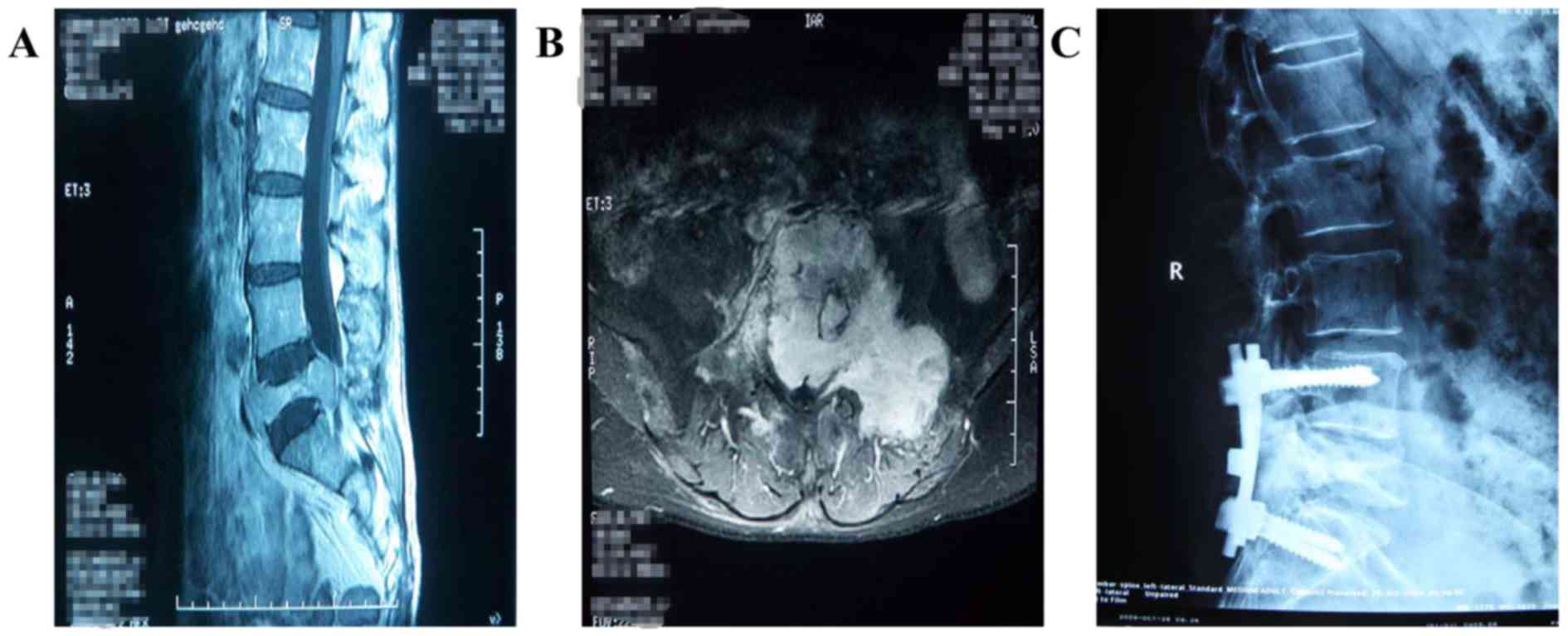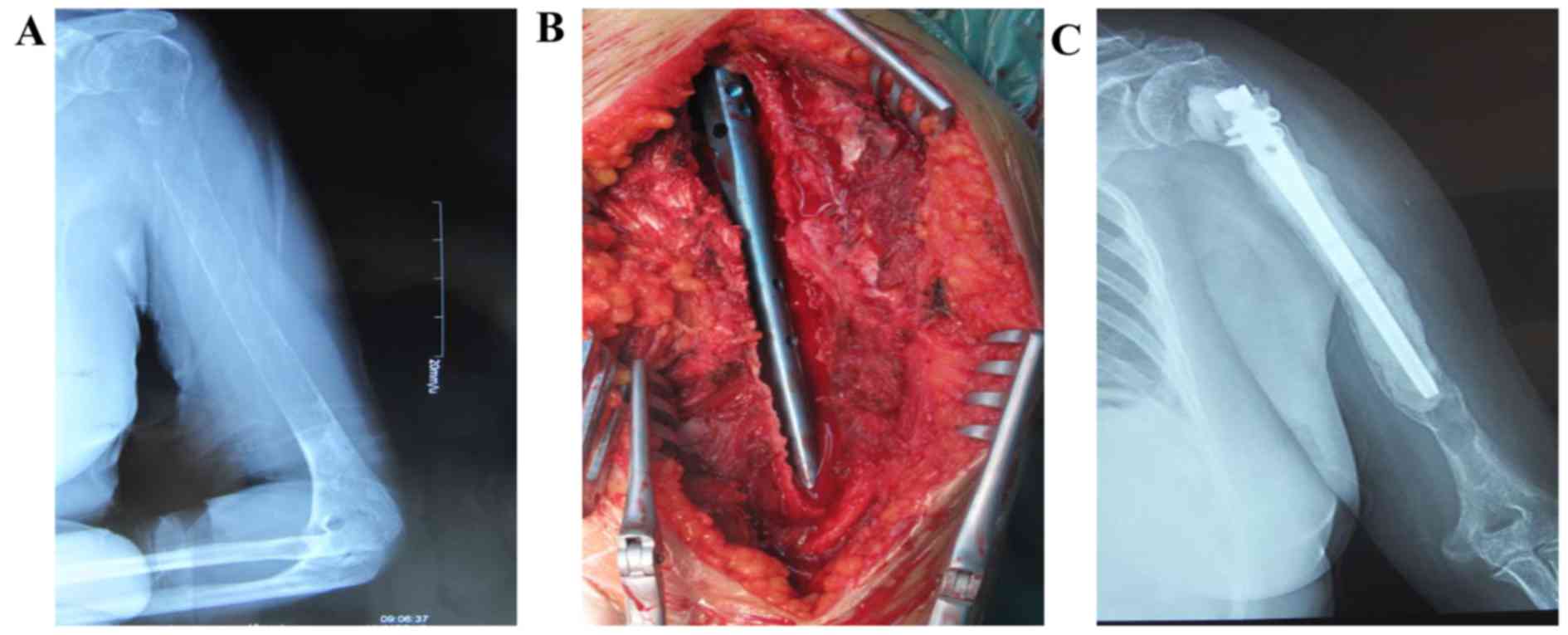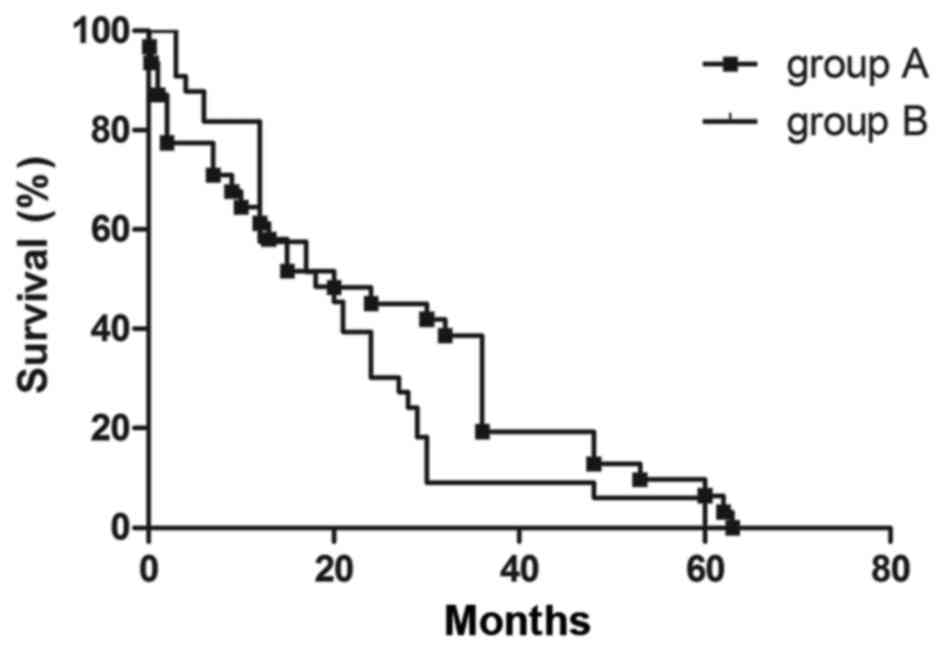|
1
|
Terpos E, Berenson J, Raje N and Roodman
GD: Management of bone disease in multiple myeloma. Expert Rev
Hematol. 7:113–125. 2014. View Article : Google Scholar : PubMed/NCBI
|
|
2
|
Edwards CM, Edwards JR, Lwin ST, Esparza
J, Oyajobi BO, McCluskey B, Munoz S, Grubbs B and Mundy GR:
Increasing Wnt signaling in the bone marrow microenvironment
inhibits the development of myeloma bone disease and reduces tumor
burden in bone in vivo. Blood. 111:2833–2842. 2008. View Article : Google Scholar : PubMed/NCBI
|
|
3
|
Raje N and Roodman GD: Advances in the
biology and treatment of bone disease in multiple myeloma. Clin
Cancer Res. 17:1278–1286. 2011. View Article : Google Scholar : PubMed/NCBI
|
|
4
|
Terpos E and Dimopoulos MA: Myeloma bone
disease: Pathophysiology and management. Ann Oncol. 16:1223–1231.
2005. View Article : Google Scholar : PubMed/NCBI
|
|
5
|
Vallet S and Anderson KC: CCR1 as a target
for multiple myeloma. Expert Opin Ther Targets. 15:1037–1047. 2011.
View Article : Google Scholar : PubMed/NCBI
|
|
6
|
Coleman RE: Bisphosphonates: Clinical
experience. Oncologist. 9 Suppl 4:S14–S27. 2004. View Article : Google Scholar
|
|
7
|
Terpos E, Cibeira MT, Blade J and Ludwig
H: Management of complications in multiple myeloma. Semin Hematol.
46:176–189. 2009. View Article : Google Scholar : PubMed/NCBI
|
|
8
|
Adamietz IA, Schöber C, Schulte RW, Peest
D and Renner K: Palliative radiotherapy in plasma cell myeloma.
Radiother Oncol. 20:111–116. 1991. View Article : Google Scholar : PubMed/NCBI
|
|
9
|
Greipp PR, Miguel San J, Durie BG, Crowley
JJ, Barlogie B, Bladé J, Boccadoro M, Child JA, Avet-Loiseau H,
Kyle RA, et al: International staging system for multiple myeloma.
J Clin Oncol. 23:3412–3420. 2005. View Article : Google Scholar : PubMed/NCBI
|
|
10
|
Rajkumar SV, Dimopoulos MA, Palumbo A,
Blade J, Merlini G, Mateos MV, Kumar S, Hillengass J, Kastritis E,
Richardson P, et al: International Myeloma Working Group updated
criteria for the diagnosis of multiple myeloma. Lancet Oncol.
15:e538–e548. 2014. View Article : Google Scholar : PubMed/NCBI
|
|
11
|
Dimopoulos MA and Terpos E: Multiple
myeloma. Ann Eur Soc Med Oncol. 21 Suppl 7:vii143–vii150. 2010.
|
|
12
|
He J, Yang L, Han X, Zheng G, Zheng W, Wei
G, Wu W, Ye X, Shi J, Xie W, et al: The choice of regimens based on
bortezomib for patients with newly diagnosed multiple myeloma. PLoS
One. 9:e991742014. View Article : Google Scholar : PubMed/NCBI
|
|
13
|
Wang H, Wang L, Lu Y, Chen X, Geng Q, Wang
W and Xia Z: Long-term outcomes of different bortezomib-based
regimens in Chinese myeloma patients. Onco Targets Ther. 9:587–595.
2016.PubMed/NCBI
|
|
14
|
Zham H, Moradi A, Rakhshan A, Zali A,
Rahbari A, Raee M, Ashrafi F, Ahadi M, Larijani L, Baikpour M and
Khayamzadeh M: Does Histologic Subtype Influence the Post-Operative
Outcome in Spinal Meningioma? Iran J Cancer Prev.
9:e38382016.PubMed/NCBI
|
|
15
|
Yasuda T, Kawaguchi Y, Suzuki K, Nakano M,
Seki S, Watabnabe K, Kanamori M and Kimura T: Five-year follow up
results of posterior decompression and fixation surgery for delayed
neural disorder associated with osteoporotic vertebral fracture.
Medicine (Baltimore). 96:e93952017. View Article : Google Scholar : PubMed/NCBI
|
|
16
|
Weinstein JN and McLain RF: Primary tumors
of the spine. Spine (Phila Pa 1976). 12:843–851. 1987. View Article : Google Scholar : PubMed/NCBI
|
|
17
|
Ha KY, Min CK, Seo JY, Kim YH, Ahn JH,
Hyun NM and Kim YC: Bone cement augmentation procedures for spinal
pathologic fractures by multiple myeloma. J Korean Med Sci.
30:88–94. 2015. View Article : Google Scholar : PubMed/NCBI
|
|
18
|
Rades D, Huttenlocher S, Dunst J, Bajrovic
A, Karstens JH, Rudat V and Schild SE: Matched pair analysis
comparing surgery followed by radiotherapy and radiotherapy alone
for metastatic spinal cord compression. J Clin Oncol. 28:3597–3604.
2010. View Article : Google Scholar : PubMed/NCBI
|
|
19
|
Morgan GJ, Child JA, Gregory WM, Szubert
AJ, Cocks K, Bell SE, Navarro-Coy N, Drayson MT, Owen RG, Feyler S,
et al: Effects of zoledronic acid versus clodronic acid on skeletal
morbidity in patients with newly diagnosed multiple myeloma (MRC
Myeloma IX): Secondary outcomes from a randomised controlled trial.
Lancet Oncol. 12:743–752. 2011. View Article : Google Scholar : PubMed/NCBI
|
|
20
|
Khan OA, Brinjikji W and Kallmes DF:
Vertebral augmentation in patients with multiple myeloma: A pooled
analysis of published case series. AJNR Am J Neuroradiol.
35:207–210. 2014. View Article : Google Scholar : PubMed/NCBI
|
|
21
|
Edwards CM, Zhuang J and Mundy GR: The
pathogenesis of the bone disease of multiple myeloma. Bone.
42:1007–1013. 2008. View Article : Google Scholar : PubMed/NCBI
|
|
22
|
Weber MH, Burch S, Buckley J, Schmidt MH,
Fehlings MG, Vrionis FD and Fisher CG: Instability and impending
instability of the thoracolumbar spine in patients with spinal
metastases: A systematic review. Int J Oncol. 38:5–12.
2011.PubMed/NCBI
|
|
23
|
Fisher CG, DiPaola CP, Ryken TC, Bilsky
MH, Shaffrey CI, Berven SH, Harrop JS, Fehlings MG, Boriani S, Chou
D, et al: A novel classification system for spinal instability in
neoplastic disease: An evidence-based approach and expert consensus
from the Spine Oncology Study Group. Spine (Phila Pa 1976).
35:E1221–E1229. 2010. View Article : Google Scholar : PubMed/NCBI
|
|
24
|
Zeifang F, Zahlten-Hinguranage A,
Goldschmidt H, Cremer F, Bernd L and Sabo D: Long-term survival
after surgical intervention for bone disease in multiple myeloma.
Ann Oncol J Eur Soc Med Oncol. 16:222–227. 2005. View Article : Google Scholar
|
|
25
|
Hannisdal E, Kildahl-Andersen O, Grøttum
KA and Lamvik J: Prognostic factors in multiple myeloma in a
population-based trial. Eur J Haematol. 45:198–202. 1990.
View Article : Google Scholar : PubMed/NCBI
|
|
26
|
Cerny J, Fadare O, Hutchinson L and Wang
SA: Clinicopathological features of extramedullary
recurrence/relapse of multiple myeloma. Eur J Haematol. 81:65–69.
2008. View Article : Google Scholar : PubMed/NCBI
|
|
27
|
Köse M, Buraniqi E, Akpinar TS, Kayacan SM
and Tükek T: Relapse of multiple myeloma presenting as
extramedullary plasmacytomas in multiple organs. Case Rep Hematol.
2015:4523052015.PubMed/NCBI
|
|
28
|
Lahtinen R, Laakso M, Palva I, Virkkunen P
and Elomaa I: Randomised, placebo-controlled multicentre trial of
clodronate in multiple myeloma. Finnish Leukaemia Group. Lancet
(London, England). 340:1049–1052. 1992. View Article : Google Scholar : PubMed/NCBI
|
|
29
|
Tatsui H, Onomura T, Morishita S, Oketa M
and Inoue T: Survival rates of patients with metastatic spinal
cancer after scintigraphic detection of abnormal radioactive
accumulation. Spine. 21:2143–2148. 1996. View Article : Google Scholar : PubMed/NCBI
|
|
30
|
Zadnik PL, Goodwin GC, Karami KJ, Mehta
AI, Amin AG, Groves ML, Wolinsky JP, Witham TF, Bydon A, Gokaslan
ZL and Sciubba DM: Outcomes following surgical intervention for
impending and gross instability caused by multiple myeloma in the
spinal column. J Neurosurg Spine. 22:301–309. 2015. View Article : Google Scholar : PubMed/NCBI
|
|
31
|
Zou J, Mei X, Gan M and Yang H:
Kyphoplasty for spinal fractures from multiple myeloma. J Surg
Oncol. 102:43–47. 2010. View Article : Google Scholar : PubMed/NCBI
|
|
32
|
Kasperk C, Haas A, Hillengass J, Weiss C,
Neben K, Goldschmidt H, Sommer U, Nawroth P, Meeder PJ, Wiedenhöfer
B, et al: Kyphoplasty in patients with multiple myeloma a
retrospective comparative pilot study. J Surg Oncol. 105:679–686.
2012. View Article : Google Scholar : PubMed/NCBI
|
|
33
|
Harrington KD: Anterior decompression and
stabilization of the spine as a treatment for vertebral collapse
and spinal cord compression from metastatic malignancy. Clin Orthop
Relat Res. 177–197. 1988.PubMed/NCBI
|
|
34
|
Kluger P, Korge A and Scharf HP: Strategy
for the treatment of patients with spinal neoplasms. Spinal Cord.
35:429–436. 1997. View Article : Google Scholar : PubMed/NCBI
|
|
35
|
Helweg-Larsen S: Clinical outcome in
metastatic spinal cord compression. A prospective study of 153
patients. Acta Neurol Scand. 94:269–275. 1996. View Article : Google Scholar : PubMed/NCBI
|
|
36
|
Pascal-Moussellard H, Broc G, Pointillart
V, Siméon F, Vital JM and Sénégas J: Complications of vertebral
metastasis surgery. Eur Spine J. 7:438–444. 1998. View Article : Google Scholar : PubMed/NCBI
|
|
37
|
Jansson KA and Bauer HC: Survival,
complications and outcome in 282 patients operated for neurological
deficit due to thoracic or lumbar spinal metastases. Eur Spine J.
15:196–202. 2006. View Article : Google Scholar : PubMed/NCBI
|
|
38
|
Weigel B, Maghsudi M, Neumann C,
Kretschmer R, Muller FJ and Nerlich M: Surgical management of
symptomatic spinal metastases. Postoperative outcome and quality of
life. Spine. 24:2240–2246. 1999. View Article : Google Scholar : PubMed/NCBI
|
|
39
|
Lau D, Leach MR, La Marca F and Park P:
Independent predictors of survival and the impact of repeat surgery
in patients undergoing surgical treatment of spinal metastasis. J
Neurosurg Spine. 17:565–576. 2012. View Article : Google Scholar : PubMed/NCBI
|
|
40
|
Terpos E, Dimopoulos MA and Moulopoulos
LA: The Role of Imaging in the treatment of patients with multiple
myeloma in 2016. Am Soc Clin Oncol Educ Book. Meeting.
35:e407–e417. 2016.
|
|
41
|
Rajkumar SV: Myeloma today: Disease
definitions and treatment advances. Am J Hematol. 91:90–100. 2016.
View Article : Google Scholar : PubMed/NCBI
|
|
42
|
Long SF, Chen GA and Fang MS: Levels of
interleukin-16 in peripheral blood of 52 patients with multiple
myeloma and its clinical significance. Int J Clin Exp Med.
8:22520–22524. 2015.PubMed/NCBI
|
|
43
|
Bataille R, Boccadoro M, Klein B, Durie B
and Pileri A: C-reactive protein and beta-2 microglobulin produce a
simple and powerful myeloma staging system. Blood. 80:733–737.
1992.PubMed/NCBI
|
|
44
|
Kariyawasan CC, Hughes DA, Jayatillake MM
and Mehta AB: Multiple myeloma: Causes and consequences of delay in
diagnosis. QJM. 100:635–640. 2007. View Article : Google Scholar : PubMed/NCBI
|
|
45
|
Howell DA, Smith AG, Jack A, Patmore R,
Macleod U, Mironska E and Roman E: Time-to-diagnosis and symptoms
of myeloma, lymphomas and leukaemias: A report from the
Haematological Malignancy Research Network. BMC Hematol. 13:92013.
View Article : Google Scholar : PubMed/NCBI
|


















